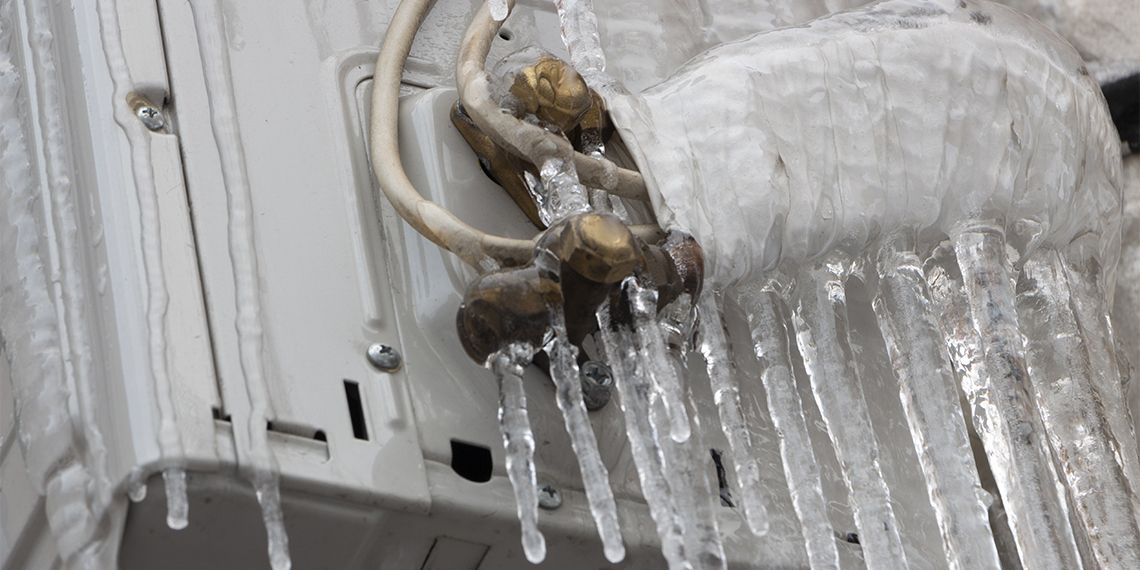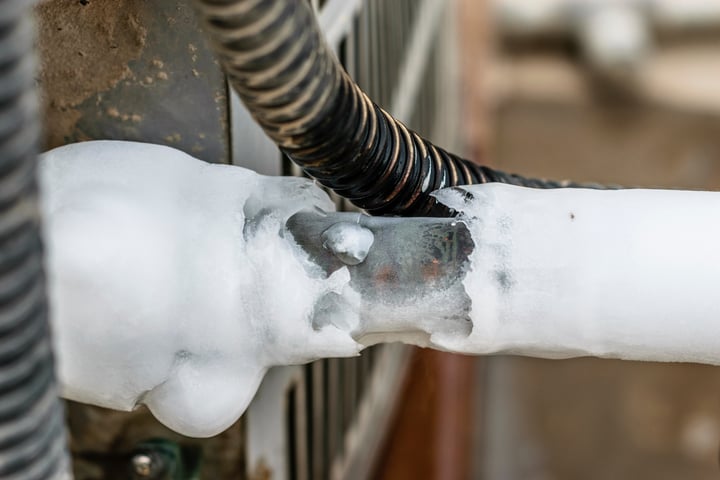How to Deal With a Frozen AC Pipe - Essential Measures for Restoration
How to Deal With a Frozen AC Pipe - Essential Measures for Restoration
Blog Article
What're your insights and beliefs about What Do I Do If My AC Pipe Is Frozen?

Introduction
Finding that your air conditioner pipe is iced up can be worrying, particularly during hot summer months when you rely on your ac system one of the most. Comprehending what to do in such a circumstance is vital to avoid additional damage to your air conditioning system and ensure your comfort inside your home.
Comprehending the Causes
Several variables can contribute to the cold of an a/c pipeline. Recognizing these reasons can aid you attend to the concern successfully.
Lack of Airflow
One usual source of an icy air conditioning pipeline is inadequate air flow. When the airflow over the evaporator coil is restricted, it can cause the coil to go down below freezing temperature, leading to ice formation on the pipeline.
Reduced Refrigerant Levels
Insufficient refrigerant levels in your AC system can likewise lead to a frozen pipeline. Reduced cooling agent levels can trigger the stress in the system to go down, leading to the freezing of moisture on the evaporator coil.
Cold Weather Conditions
In colder environments, freezing temperatures outside can contribute to the cold of air conditioner pipelines. If your air conditioning unit is not appropriately shielded or if there are leaks in the ductwork, cool air can infiltrate the system, creating the pipe to ice up.
Dirty Air Filters
Filthy or clogged air filters can restrict air movement in your a/c system, bring about different concerns, including a frozen pipe. It's vital to replace or clean your air filters regularly to make sure appropriate air flow and avoid ice buildup.
Indicators of a Frozen A/c Pipe
Acknowledging the indicators of an icy air conditioning pipeline is important for prompt activity.
Minimized Airflow
If you observe a considerable decrease in airflow from your vents, it can suggest a frozen pipe.
Ice Buildup on the Pipe
Noticeable ice accumulation on the refrigerant line or the evaporator coil is a clear indicator of a frozen air conditioning pipe.
Weird Sounds from the Unit
Uncommon audios, such as hissing or gurgling, coming from your air conditioning device can signify that there's ice existing on the pipeline.
Immediate Actions to Take
When confronted with a frozen a/c pipe, it's important to act swiftly to prevent additional damage to your air conditioning system.
Turning off the a/c
The first step is to turn off your a/c to avoid the system from running and intensifying the issue.
Checking for Blockages
Examine the location around the interior system for any type of obstructions that might be obstructing airflow, such as furnishings or drapes.
Defrosting the Pipe
You can make use of mild approaches like positioning towels soaked in cozy water around the frozen pipeline to aid thaw it gradually.
Preventive Measures
Taking safety nets can assist stay clear of future incidents of a frozen AC pipe.
Normal Maintenance Checks
Arrange routine maintenance get in touch with a specialist HVAC professional to ensure that your air conditioner system is running effectively.
Transforming Air Filters
Routinely replace or cleanse your air filters to avoid airflow constraints and maintain optimum performance.
Shielding Exposed Pipes
If your air conditioning pipelines are exposed to cold temperatures, consider shielding them to stop cold during winter season.
Seeking Professional Help
If DIY techniques fail to solve the issue or if you're unclear concerning just how to continue, it's best to seek aid from a qualified HVAC professional.
When DIY Methods Fail
If your attempts to thaw the pipeline or address various other issues are not successful, it's time to call an expert.
Significance of Hiring a Professional HVAC Technician
A licensed HVAC service technician has the experience and tools needed to identify and repair concerns with your air conditioning system securely and properly.
Conclusion
Managing an icy AC pipeline can be a discouraging experience, but recognizing exactly how to respond can aid reduce damages and recover comfort to your home. By recognizing the causes, acknowledging the indicators, and taking prompt action, you can successfully attend to the issue and avoid future incidents.
What to Do If Your AC Line Is Frozen
Make Sure All Supply and Return Air Vents Are Open
If you notice problems with airflow, the first thing you should do is check your supply and return vents. Supply vents distribute clean, conditioned air throughout your home. As this air becomes stale, it’s pulled into the return vent, where it’s reconditioned before being sent back out through the supply vent.
When these vents are closed, air won’t flow in the home. Before examining your AC, check the vents in every room and ensure they’re all open.
Check for a Dirty Air Filter
Another possible cause of limited airflow is a dirty air filter. Your air conditioner’s filters catch elements you don’t want to breathe in, such as dirt and dust. Over time, filters can become clogged, ultimately blocking air from flowing in and out. The lack of airflow can then cause the entire coil to freeze and will completely restrict any air from moving through it. The AC may need to be powered off for one to two days to allow the coil to thaw after replacing the filter to allow proper functioning of the unit. This debris can also accumulate on your AC’s evaporator coil, requiring a more serious repair. In general, air filters should be cleaned regularly (about every two weeks).
Assess Your Outdoor Unit
In addition to checking your AC, assessing the outdoor unit is a good idea. Also known as the condensing unit, it works with your interior unit to release heat outside. An issue with the outdoor unit can result in rising internal temperatures.
Overgrown Shrubs or Clogged Leaves
From leaves and twigs to shrubs and debris, there’s no shortage of outdoor elements that can accumulate around your condensing unit. When these elements get lodged inside the unit, they can block airflow. Fortunately, removing the blockage can solve the problem.
Sounds of a Broken Fan
Shrubs and leaves aren’t the only things that can impede your outdoor unit’s airflow. If the fan is broken, the unit won’t be able to properly get rid of heat — which means the internal temperature won’t go down. First, make sure the fan is spinning. If it is, check for the following sounds of a broken fan:
Buzzing Rattling Screeching Hissing Clicking Preventative Measures
Nobody wants to deal with a frozen AC line. In addition to causing problems with your air conditioner, they require professional repairs. On the bright side, there are preventative measures you can take to help ensure this issue doesn’t arise in the first place.
https://www.coopergreenteam.com/blog/what-to-do-if-ac-line-frozen

I am just very serious about Why Is Ice On My Outside Air Conditione and I hope you enjoyed reading the new article. Enjoyed our write up? Please share it. Help somebody else find it. I praise you for your time. Visit us again soon.
Click Here Report this page